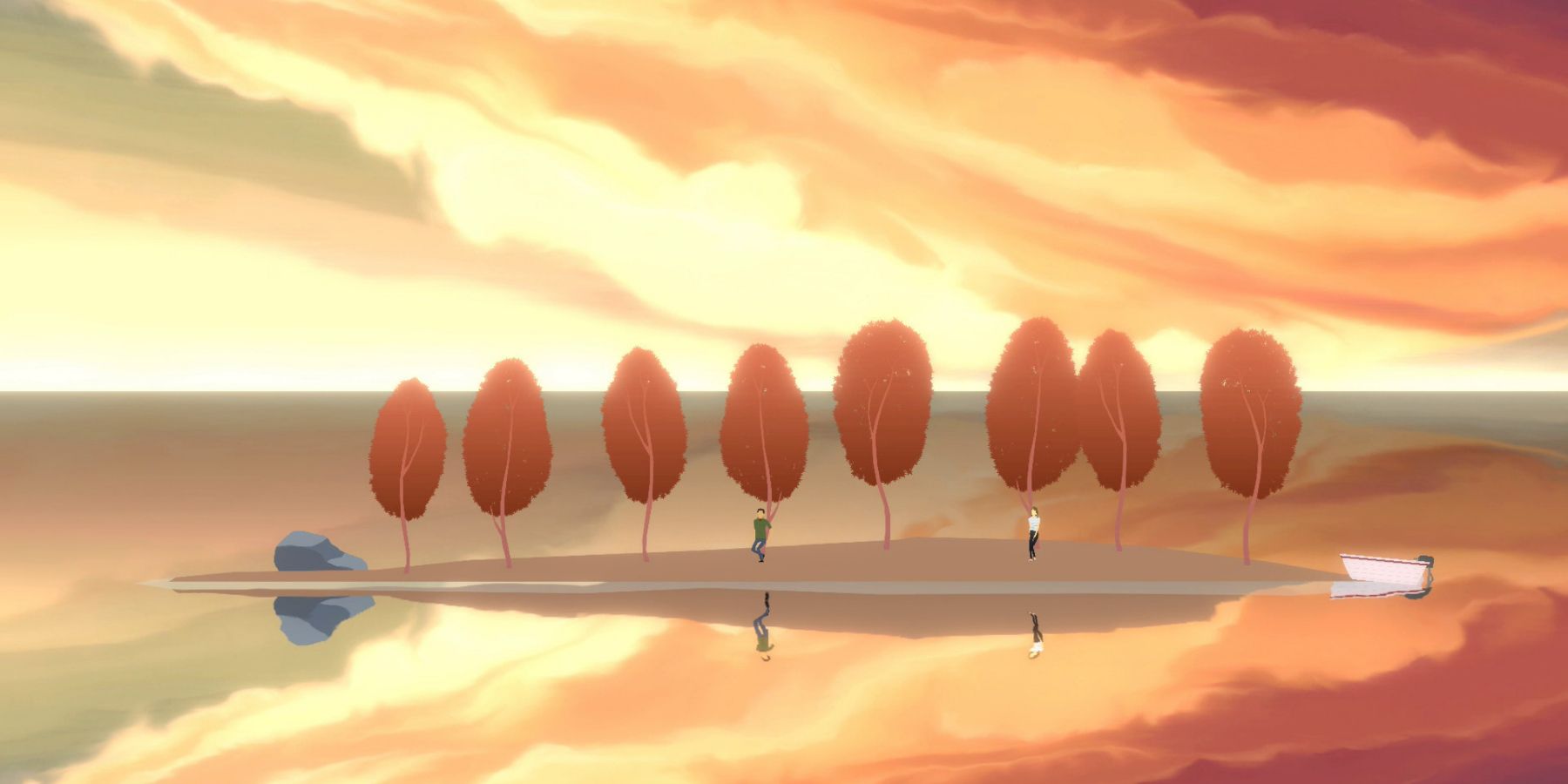Key Takeaways
- The Vanishing of Ethan Carter served as a template for narrative exploration games, expanding the medium’s boundaries.
- The game’s use of photogrammetry created an immersive, surreal world with intense moments of horror combined with realism.
- Ethan Carter’s influence is seen in games like What Remains of Edith Finch and Firewatch, emphasizing environmental storytelling.
The Vanishing of Ethan Carter, by developer The Astronauts, was the indie studio’s debut title, originally released on September 25, 2014. At the time, it was seen as something of an outlier, as The Vanishing of Ethan Carter didn’t quite seem to neatly fit into established genre conventions. Although the term has come to be seen as having a negative connotation, as a first-person exploration and puzzle solving experience, The Vanishing Ethan Carter can technically be classified as a “walking simulator.” However, it is more than that reductive label usually implies, and over the last decade its vision has proven clairvoyant in a number of ways.
As an earlier example of the experimental work being done within video games, and how the boundaries of the medium could be expanded, The Vanishing of Ethan Carter set a template for the burgeoning subgenre of narrative and exploration-focused titles. Looking back at it ten years later, it remains one of the most impressive examples of how informed environmental design in games can create an experience greater than the sum of its parts. Ethan Carter made excellent use of modern technology to render its world, integrating these techniques into its presentation to create a curated setting that is supremely immersive, and provided a blueprint for how titles that came after could achieve similar heights.

Related
Indie Games Set In The Fall Season
Indie games tend to explore atmospheric storytelling, giving them a rich selection of titles that dive into the themes of visuals of autumn.
10 Years Later, The Vanishing of Ethan Carter’s Environmental Storytelling Approach Still Stands Tall
The Vanishing of Ethan Carter Was a Prototype for Engaging Environmental Storytelling
The first thing players see upon booting up The Vanishing of Ethan Carter is a line of text stating that it is “a narrative experience that does not hold your hand.” Players control Paul Prospero, a detective investigating a strange mystery in Red Creek Valley, a sleepy Midwestern town during the 1970s. Ethan Carter is a 12-year-old boy who has seemingly disappeared. Without the traditional guidance provided by quests or map markers, players must instead rely mainly on their navigational skills and the strength of the level design, poking around the woods to discover and solve an organic series of puzzles to uncover the truth of events.
What immediately stands out is The Vanishing of Ethan Carter‘s utilization of photogrammetry; a process by which multiple photographs of real objects are used to render digital versions of them incredibly accurately and realistically. Ethan Carter requires that players literally go off the beaten path to follow breadcrumb trails through winding paths and oddly ruined houses, paying careful attention to the meaningful details scattered throughout.
This method also lends the world a layer of surreality. While the Valley itself is extremely naturalistic, this natural beauty contrasts against some of the more intense moments and scenes of supernatural horror, and the effect is striking by adding to the mystique of the experience, punctuated by major story moments and revelations. Ethan Carter‘s environment is an intrinsic part of the narrative, and essentially a character unto itself.
The Vanishing of Ethan Carter’s Influence Can Still Be Seen and Felt Today
There are numerous other titles that came after The Vanishing of Ethan Carter, and were positively compared to it, particularly through their similar depiction of an engaging world via a focus on moody environmental and related elements. Of some notable games that also focused on investigations within strange or unsettling atmospheres:
- What Remains of Edith Finch
- Firewatch
- Everybody’s Gone to the Rapture
- Observer
- Still Wakes the Deep
The Vanishing of Ethan Carter was a pioneer in such design, and is still counted among the best specifically for its focus on stunning environmental storytelling. Its photogrammetry approach combined with the supernatural and Lovecraftian-influenced vignettes serve as a top-tier example of games that blur the lines between reality, and provide a more unique, non-traditional experience. Ethan Carter showed so much more than it told, as reflected in the vibrant yet foreboding design of Red Creek. The Valley and its landmarks naturally guide players without the need to signpost, immersing fans in a memorable and breathtaking landscape. Its lineage is present in various titles since, and the sensibilities that it displays in this area remain visionary and prescient.




